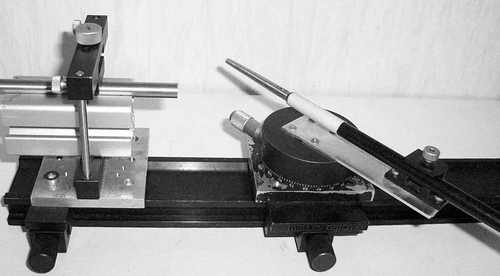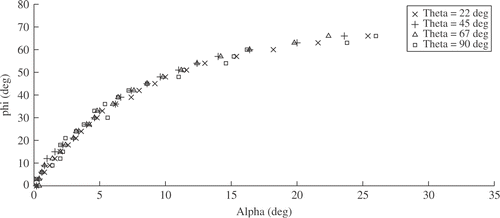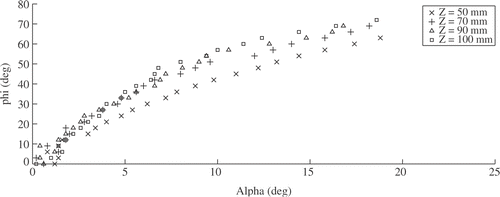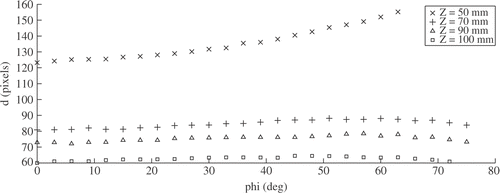Figures & data
Figure 1. (a) The color-coded instrument. (b) The averaged color distribution in the H-S plane for 3000 laparoscopic images, together with the H-S occupation of the colored band in the highlighted oval. (c) The segmented image with superimposed geometric features needed for localization. [Color version available online.]
![Figure 1. (a) The color-coded instrument. (b) The averaged color distribution in the H-S plane for 3000 laparoscopic images, together with the H-S occupation of the colored band in the highlighted oval. (c) The segmented image with superimposed geometric features needed for localization. [Color version available online.]](/cms/asset/e33269f3-b760-49cd-8698-869828c36bd9/icsu_a_220998_f0001_b.gif)
Figure 2. Schematic representation of the image processing steps needed for color segmentation: the pre-processing phase is shown at the top, while the lower part shows the intra-operative segmentation process applied to two endoscope images. See text for a detailed description. [Color version available online.]
![Figure 2. Schematic representation of the image processing steps needed for color segmentation: the pre-processing phase is shown at the top, while the lower part shows the intra-operative segmentation process applied to two endoscope images. See text for a detailed description. [Color version available online.]](/cms/asset/0d126ee5-eea0-44aa-891f-27e713de2624/icsu_a_220998_f0002_b.gif)





